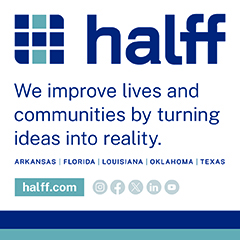The issue of homelessness is at the very top of priority lists for every mid-size and large city in the U.S. The costs associated with large communities of unhoused individuals are daunting. Different types of remedies exist, and hundreds of cities are planning projects to address the problem of homelessness. Some of the more common remedy models currently in use include the following:
- Permanent Supportive Housing: This model combines affordable housing with supportive services. Cities like Los Angeles and Seattle have launched initiatives of this type.
- Rapid Re-Housing: Some cities have rushed to move unhoused individuals and families into permanent housing. San Francisco and New York City have adopted this approach.
- Tiny Home Villages: Both Austin and Portland have created tiny home communities as transitional housing solutions.
- Emergency Shelters: Chicago and Denver have both increased the number of emergency shelters available for temporary relief, especially during difficult weather conditions.
Public officials have various funding options. Federal funding programs such as the Housing Trust Fund as well as state-level initiatives often provide the required funding for housing projects. Other sources include local taxes and bonds along with public-private partnerships where private investors join with public officials to provide solutions. But, as cities across the nation continue to implement diverse strategies to combat homelessness, it becomes evident that no single solution fits all. The following examples of upcoming opportunities provide an in-depth look at specific initiatives being undertaken in various metropolitan areas.
City leaders in Syracuse, New York, will oversee a $100 million redevelopment project to combat homelessness and provide affordable housing options to others. Plans call for the revitalization of a long-abandoned 47-acre site and launch a multi-phase initiative designed to produce a mix of affordable and market-rate residential units alongside commercial spaces and green areas. Phase I will begin in late 2025 and will include the construction of 250 housing units, development of 7.5 acres of green space, and the preparation work for 3,600 square feet of retail space.
Housing units will be a mix of sizes to serve a diverse population. Subsequent phases will add more residential units, advanced manufacturing facilities, office spaces, and community areas. Contractors have been selected for demolition, environmental remediation, and site grading, however, solicitations for construction have not yet been released. Those documents are expected soon, as construction is scheduled to start in the summer of 2025.
City officials in Indianapolis, Indiana, will oversee the design of a new four-story, 63,000-square-foot facility to house families and individuals experiencing homelessness. The project has a projected cost of $32 million. The high occupancy facility will include a day center, recreation area, cafeteria, hygiene stations and space for essential services. It will also have administrative offices, resource space, and an employment lab. Twenty family units will be made available along with 10 couple units and 50 individual units. Plans call for it to be operational in early 2027 and solicitation documents will be released in mid- 2025.
A new supportive housing project with an estimated cost of $30 million is planned for Seattle, Washington. The new facility will provide 120 studio units for individuals experiencing chronic homelessness and include 24/7 on-site staffing along with integrated supportive services and community spaces both indoors and outdoors. Three existing structures that previously served as transitional housing and are beyond salvaged will be demolished. Demolition will begin in late summer 2025 followed by the start of construction. An architectural firm has been selected for the project, but solicitations have not been released for construction firms.
The Traverse City Housing Commission of Michigan will oversee the expansion and renovation of a large apartment complex as it is repurposed to accommodate citizens in dire need of affordable housing. The project carries a cost estimate of $20 to $25 million. Once completed, it will provide affordable homes for low- to moderate-income families and essential workers. The complex currently consists of 21 two-story units that will be modernized, while two new apartment buildings will be constructed on-site, adding 33 additional housing units. When finished, the development will feature a total of 54 units of various sizes, accommodating both individuals and families. Currently the project is in the planning and design phase and construction is set for the spring of 2026.
Recently, the state of Utah’s Homeless Services Board initiated plans to establish a transformative, homeless shelter campus for unhoused people in the Wasatch Mountain region. The initiative will provide housing as well as comprehensive centralized support for unhoused individuals. The proposed campus will be developed on a 30-acre site to accommodate a large, 1,200 beds and an array of on-site services to help residents transition to permanent housing. The effort is still in the early stages, with potential sites being evaluated, but the Office of Homeless Services is moving the project quickly. Construction is scheduled to start sometime in 2025 so solicitation documents will be released soon.
A $20 million housing project will soon be launched alongside the University of California, Berkeley campus which is located near the historic People’s Park. The project will create a new housing facility designed to support the area’s unhoused community, students, and other low-income individuals. The project is being designed to provide 100 apartment units while modernizing the historic park. The planned four-story facility will preserve more than 60% of the 2.8-acre site as public park space. Plans call for a Request for Qualifications (RFQ) to be issued as soon as the first quarter of 2025.
The challenge of providing housing and emergency relief for those experiencing homelessness is complex and the cost is extreme. However, providing housing is more cost-effective for a city than addressing the escalating expenses associated with homelessness, which only worsens as individuals and families remain unhoused. As cities continue to struggle to address these issues, the demand for collaboration between public and private sector partners and the search for contractors will continue to increase. The needs are great, immediacy is eminent, and no part of the country is unaffected.
Photo/graphic courtesy Canva













